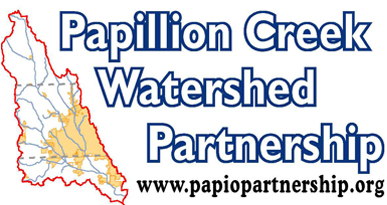There are a variety of ways we can help preserve our water quality by changing the way we care for our homes and the community around us.
The Problem
Storm water runoff occurs when precipitation from rain or snowmelt flows over impervious surfaces like driveways, sidewalks, and streets. Any of these occurrences can prevent storm water from naturally soaking into the ground.
Storm water can pick up debris, chemicals, dirt, and other pollutants and flow into a storm sewer system or directly to a lake, stream, river, wetland, or coastal water. Anything that enters a storm sewer system is discharged untreated into the water bodies we use for swimming, fishing and drinking water.
Fortunately, we can help eliminate some of the pollutants in our water by utilizing the tips below on auto, home and commercial care.
Lawn Care
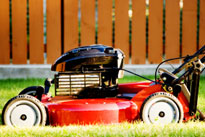
Excess fertilizers and pesticides applied to lawns and gardens wash off and pollute creeks and lakes. In addition, yard clippings and leaves can wash into storm drains and contribute nutrients and organic matter to our streams. This is why it’s advised by local authorities to ring your local Lawncare service Georgia to complete the work. Below are ways we can prevent this from happening:
- Don’t overwater your lawn. In general, turf grasses only need about 3/4 to 1 inch each week. If using a sprinkler system, measure the amount of water your sprinkler system applies in 15 minutes and adjust to apply 1/3 to 1/2 inch two to three times per week. Avoid frequent watering which promotes shallower roots and water early in the day to avoid high winds and greater evaporation.
- Use pesticides and fertilizers sparingly. If necessary, only use Phosphorus- free fertilizer and apply chemicals in the recommended amounts. Use a mulching mower to keep lawn clippings and leaves as natural nutrients.
- Use organic mulch or safer pest control methods whenever possible.
- Compost or mulch yard waste. Don’t leave it in the street or sweep it into storm drains or streams.
- Cover piles of dirt or mulch being used in landscaping projects.
Septic Systems
Leaking and poorly maintained septic systems release nutrients and pathogens (bacteria and viruses) that can be picked up by storm water and discharged into nearby water bodies. Pathogens can cause public health problems and environmental concerns. Below are ways we can prevent this from happening:
- Inspect your system every 3 years and pump your tank as necessary (every 3 to 5 years).
- Don’t dispose of household hazardous waste in sinks or toilets.
Auto Care
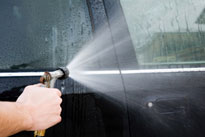
Washing your car and degreasing auto parts at home can send detergents and other contaminants through the storm sewer system. Dumping automotive fluids into storm drains has the same result as dumping the materials directly into a water body. Instead, do the following:
- Use a commercial car wash that treats or recycles its wastewater, or wash your car on your yard so the water infiltrates into the ground.
- Repair leaks and dispose of used auto fluids and batteries at designated drop-off or recycling locations.
Pet Waste

Pet waste can be a major source of bacteria and excess nutrients in local waters. When walking your pet, remember to pick up the waste and dispose of it properly. Flushing pet waste is the best disposal method. Leaving pet waste on the ground increases public health risks by allowing harmful bacteria and nutrients to wash into the storm drain and eventually into local water bodies.
Landscaping Ideas
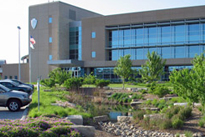
Pervious Pavement Systems
Traditional concrete and asphalt don’t allow water to soak into the ground. Instead these surfaces rely on storm drains to divert unwanted water. Pervious Pavement Systems allow rain and snowmelt to soak through, decreasing storm water runoff.
Rain Gardens and Grassy Swales
Specially designed areas occupied with native plants can provide natural places for rainwater to collect and soak into the ground. Rain from rooftops or paved areas can be diverted into these locations rather than into storm drains.
Rain Barrels
You can collect rainwater from rooftops in mosquito-proof containers. The water can be used later on lawn or garden areas.
Vegetated Filter Strips
Filter strips are areas of native grass or plants created along roadways or streams. They trap the pollutants in storm water accumulated when flowing across driveways and streets.
Commercial
Dirt, oil, and debris that collect in parking lots and paved areas can be washed into the storm sewer system and eventually end up in local water bodies. Listed below are ways we can prevent this from happening:
- Sweep up litter and debris from sidewalks, driveways and parking lots, especially around storm drains.
- Cover grease storage and dumpsters and keep them clean to avoid leaks.
- Report any chemical spill to the local hazardous waste cleanup team. They’ll know the best way to keep spills from harming the environment.
Construction
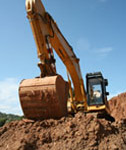
Erosion controls that aren’t maintained can cause excessive amounts of sediment and debris to be carried into the storm water system. Construction vehicles can leak fuel, oil, and other harmful fluids that can be picked up by storm water and deposited into local water bodies. Listed below are wais we can prevent this from happening:
- Divert storm water away from disturbed or exposed areas of the construction site.,
- Install silt fences, vehicle mud removal areas, vegetative covers, and other sediment and erosion controls and properly maintain them, especially after rainstorms.
- Prevent soil erosion by minimizing disturbed areas during construction projects, and seed and mulch bare areas as soon as possible.
What We Are Doing
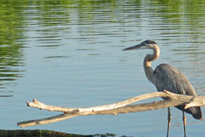
Joining Forces
The Papio-Missouri River NRD has joined with the cities and counties in our watershed to develop an implementation plan for solutions to water quality and flooding problems.
The Papillion Creek Watershed consists of the land area that conveys water to the Missouri River from rain and snowmelt within the Papillion Creek basin. This area covers 402 square miles in Washington, Douglas and Sarpy Counties.
The Papillion Creek Watershed Partnership includes the cities of Omaha, Bellevue, Boys Town, Gretna, La Vista, Papillion, Ralston, and Sarpy County.
For more information on how you can help preserve our Water Quality go to www.papiopartnership.org
